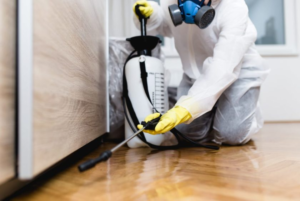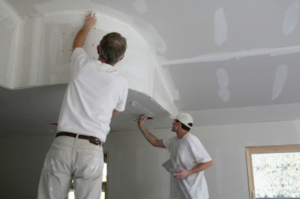What Does a Massage Therapist Do?
Massage therapists receive extensive education in the body’s bones, muscles and circulatory system. They also learn about contraindications — situations where a massage could do more harm than good.

General massage therapists focus on relieving stress, promoting relaxation and healing injuries. They can be helpful for people with chronic conditions like fibromyalgia or heart disease. Viait https://www.flowstate918.com/ to learn more.
A massage therapist manipulates soft tissue to relieve pain and promote relaxation in clients. They also give advice on self-care, such as hydration and stretching, to help their clients maintain the benefits of their massage. They also ensure a safe and comfortable environment during the session by following proper sanitation protocols, maintaining clean linens and equipment, and adhering to professional standards and ethical guidelines.
There are many different types of massage therapy, each with its own set of benefits and techniques. For example, Swedish massage involves long strokes and kneading, which is used to promote circulation and reduce muscle tension. It can be used to relax the whole body or specific areas of tension, such as the neck and shoulders. Other types of massage, such as trigger point therapy and deep tissue massage, can be used to treat injuries and reduce pain in specific areas of the body.
To achieve the best results, a massage therapist should customize their technique to suit each client’s needs. This can be done by using varying amounts of pressure, applying different types of massage techniques, and ensuring that the client’s comfort level is maintained throughout the session. It is also important to communicate with the client throughout the session, ensuring that they are happy with the progress being made and adjusting the intensity of the massage accordingly.
Massage can also be used to improve overall mood by promoting the release of serotonin and dopamine, which are neurotransmitters that regulate stress hormones. A recent study found that getting a regular massage can decrease the levels of cortisol, a stress hormone, and increase feelings of calmness.
Massage therapists should be familiar with several massage techniques, including effleurage, tapotement and friction, to provide the most effective and relaxing experience for their clients. They should also be able to apply various massage oils, such as lavender, chamomile and tea tree oil, to enhance the therapeutic effects of the treatment.
Client Communication
As a massage therapist, you will need to communicate with clients to determine their needs and discuss treatment options. Whether through emails, phone calls or in-person meetings, it’s important to keep clients updated and aware of any changes to their treatments. This helps to prevent confusion and disappointment. Clients also appreciate when you are timely in your responses. A quick response, even if only to acknowledge receipt of their communication, demonstrates that you value their concerns and are committed to providing them with quality care.
While working with a client, you should pay close attention to their communication style, tone and body language. This will help you to adjust your own communication techniques so that they are more effective with each individual client. For example, if you notice that one of your clients responds better to more formal communication, then you may want to consider mirroring their communication style or at least adjusting your tone to match. It is also a good idea to ask clients for feedback after each massage session, as this will allow you to assess your effectiveness and make any necessary adjustments.
In addition to communicating with clients, massage therapists may need to work with other healthcare professionals to develop comprehensive treatment plans for their patients. This can include collaborating with acupuncturists, chiropractors, medical doctors and physical therapists. In some cases, a massage therapist might even need to provide referrals for their clients to receive additional services.
Massage therapy is a growing field, and many graduates of NWHSU go on to enjoy successful careers in this exciting field. However, like any profession, it requires hard work, persistence and marketing savvy to build a strong client base and maintain a steady flow of business.
Massage therapists who specialize in specific areas, such as sports massage, can often find jobs with professional athletic teams and organizations. This is due in part to the fact that massage can significantly enhance an athlete’s performance by helping to prevent injuries, reduce pain and swelling and improve range of motion. For those who are interested in becoming a licensed massage therapist, it is necessary to meet your state’s requirements for licensure. This typically includes completing a set number of education hours and passing an exam, such as the Massage and Bodywork Licensing Examination (MBLEx).
Documentation
As with any healthcare professional, a massage therapist keeps records of evaluations and treatments. This is to help clients track their progress, determine when another form of treatment may be appropriate and provide proof that the client received massage therapy. Records should be kept for six years or the age of 22, whichever comes first. Generally, clients have the right to request and receive copies of their records.
Licensed massage therapists are often called masseurs, but the term is becoming outdated and can carry negative connotations. A registered massage therapist is trained to work on various areas of the body, and they also use therapeutic kneading techniques to promote healing, relieve pain and stress, and boost overall health. They are licensed to practice in a variety of settings, including spas and clinics, as well as private practices.
Some massage therapists specialize in particular massage modalities, such as shiatsu, Swedish medical massage, or deep-tissue massage. Others choose to work as general practitioners, and they focus on reducing stress and promoting relaxation for their clients. Regardless of their specialty, massage therapists use similar methods and techniques, as well as the same massage table or chair. This allows them to offer a consistent experience to their clients, no matter where they are located. This is one of the reasons why they are highly sought after in spas and wellness centers, as well as in sports clinics and other health facilities.
Licensing
Most states require massage therapists to be licensed, although cities and counties may also regulate the profession. Licensing provides a degree of consistency in the training of massage therapists, and ensures that clients receive professional care and treatment. It also establishes a formal complaint process that helps to prevent unethical or non-compliant massage therapists from practicing.
There are two types of massage therapists: Certified Massage Therapists (CMT) and Licensed Massage Therapists (LMT). CMTs have met the educational requirements and passed professional examinations set by a non-governmental body, while LMTs have satisfied specific state regulations, passed a state exam, and fulfilled continuing education needs to be licensed. Licensed massage therapists can work in any setting, including hospitals, wellness centers, and private practices.
In addition to having a high school diploma or equivalent and passing the New York state massage therapy licensure exam, you must have completed at least 1,000 hours of clinical practice under the supervision of an approved educator. Those who meet all of the licensure criteria, but have not yet passed the exam, can apply for a limited permit, which allows them to practice as massage therapists until they pass the exam or their first attempt is unsuccessful.
Some massage therapists have obtained certification from the National Certification Board for Therapeutic Massage and Bodywork, which requires a course of study of 1,020-hours that includes classroom theory and hands-on practice techniques. The board also administers the Massage & Bodywork Licensing Examination (MBLEx), which is a comprehensive test that covers anatomy and physiology, massage techniques, business skills, and client-care.
Many massage therapists are also members of professional massage organizations, such as the American Massage Therapy Association (AMTA). Membership in an organization demonstrates a commitment to ethical standards and professionalism, which benefits both massage therapists and their clients. It is also a way to stay informed about advances in the field of massage therapy and to connect with colleagues.
Finally, it is important for massage therapists to maintain their licensing and certification by attending seminars and workshops and taking ongoing continuing education classes. This will help them to stay current on the latest trends and developments in the field of massage therapy, so they can continue to provide the highest quality of care for their clients.








